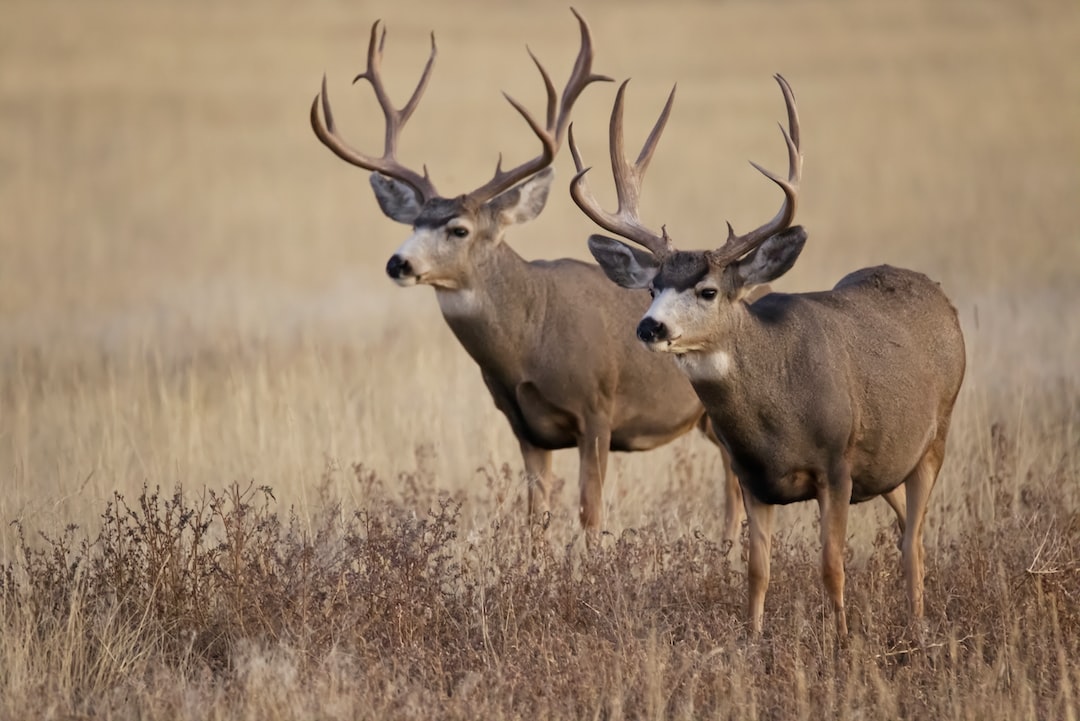Hunting season either just happened or it’s coming right up, and if you’re looking to score a buck, then you’ve come to the right place.
From step-by-step instructions on how to do it properly, to different scoring methods and even a look into the history of Boone & Crocket and Pope & Young’s minimum trophy requirements – we have everything you need for an exciting hunting experience.
So get ready because in this blog post we will be diving deep into all things related with ‘scoring a buck’.
Scoring a Buck: Step-by-Step Guide
Scoring a buck is an important part of hunting, and it’s essential to know how to do it properly.
This guide will provide step-by-step instructions on how to score a buck, including preparation, identifying the buck, taking measurements, calculating the score, and recording your score.
Preparation:
Before you begin scoring a buck there are some items that you should have ready. You will need a tape measure or ruler for measuring antler length and circumference as well as something to record your measurements such as paper or pencil/pen.
Once you have your gear ready, it is time to take its measurements for scoring purposes.
This can be done using either a tape measure or ruler, depending on the type of measurement needed (e.g., total length).
A flat tape or a seamstress tape works great for this as it is flexible and molds to the curves of the antlers.
Commonly measured elements include main beam length (the longest point between both antler tips), inside spread (distance between widest points on each side), tine lengths (lengths of individual points) and circumference around base where antlers meet skull cap, if applicable.
Calculating Score:
After all necessary measurements are taken they must then be added together according calculate whichever method being used whether Boone & Crockett Method, Pope & Young Method, Safari Club International Method etc.
For example if using Boone & Crockett system total scores are determined by adding up all measured lengths plus any deductions based off certain criteria such abnormal points etc.
Finally, once the calculated score has been obtained, it should be recorded accurately. This way the hunter has a permanent record of their success story to share with friends and family or for future generations to admire.
Here is a helpful video that breaks down scoring a buck easily:
Scoring a buck is an essential part of the hunting experience.
Now that you understand the basics, let’s take a look at different scoring methods to determine which one is right for you.
Different Scoring Methods
Knowing how to properly score your trophy can help you determine its value and know how it holds up compared to others. There are several different scoring methods available for hunters, each with their own set of rules and regulations.
The Boone & Crocket Method is one of the most popular scoring systems used by hunters in North America.
This system uses antler measurements such as main beam length, inside spread, tine length, circumference measurements, and other factors to calculate a final score. The higher the score, the more valuable the trophy will be considered.
To qualify for entry into this system’s record books, a minimum score must be achieved depending on species type and region hunted in order to receive official recognition from Boone & Crocket Club officials.
The Pope & Young Method is another widely-utilized scoring system that was established in 1961 by Dr Saxton Pope and Art Young, two renowned bowhunters. This system works similarly to the Boone & Crocket method but applies only to animals taken with archery equipment or crossbows instead of firearms or muzzleloaders like B&C does.
Furthermore, for entry into P&Y’s records book, minimum scores must be achieved depending on species type and region hunted as well as certain requirements regarding weapon types used during harvest which must be met before any entries will be accepted.
Finally, there is Safari Club International (SCI) which offers another method for calculating animal scores using similar criteria as both B&C and P&Y do. Unlike the other two systems, SCI does not have any specific minimum requirements nor weapon restrictions so anyone can enter regardless of their choice of traditional archery gear or modern firearms/muzzleloaders etc.
Additionally, SCI allows people from all over world to submit entries whereas both B&C and P&Y only accept submissions from North American residents, thus opening up opportunities for international hunters looking to get recognized worldwide too.
After learning about the different scoring methods, it’s time to delve deeper into the history of one of them – Boone & Crocket Method – and explore how it has evolved over time.
History of Boone & Crocket Scoring System
A. Origins of the System:
The Boone & Crocket scoring system was developed in 1887 by Theodore Roosevelt and George Bird Grinnell, two avid outdoorsmen who were concerned about the dwindling population of big game animals due to overhunting.
They created a system that would measure the size and shape of antlers or horns on big game animals, which could then be used to determine their age and health. Learn how to age a deer based on its tracks.
This system was designed to encourage ethical hunting practices and help conserve wildlife populations.
B. Development of the System:
Over time, the Boone & Crocket scoring system has been refined and improved upon as new technologies have become available for measuring antler size more accurately.
In addition, various categories have been added such as typical vs non-typical antlers or horns, making it easier for hunters to compare their trophies with others from around the world. Today’s version is considered one of the most accurate systems for measuring trophy quality in North America.
C. Modernization of the System:
With advances in technology, there are now computer programs that can quickly calculate scores using digital images instead of physical measurements taken from an animal’s skull plate or horn base circumference measurements taken with calipers.
This makes it much easier for hunters to enter their trophy into competitions without having to send out physical specimens for measurement first, saving them both time and money.
The Boone & Crocket scoring system has been a part of the hunting culture for centuries, evolving and modernizing over time to reflect current trends. Now, let’s take a look at the history of the Pope & Young scoring system and how it differs from its predecessor.
History of Pope & Young Scoring System
The Pope & Young scoring system is a method of measuring the size and quality of an animal’s antlers or horns. It was developed in 1961 by Glenn H. Stalker, Jack Reneau, and Dr. Saxton Pope to recognize trophy animals taken with archery equipment only.
The system has been adopted as the official record-keeping standard for bowhunting trophies worldwide and is used by many state wildlife agencies in North America for their records programs.
Origins of the System:
The original idea behind the Pope & Young scoring system was to provide a way to measure trophy animals taken with archery equipment only, which had not previously been done before this time period.
This system was designed to be more inclusive than other systems that were available at that time such as Boone & Crocket which focused on firearms hunting only.
Development of the System:
Over time, improvements have been made to the scoring system including changes in measurement techniques and criteria for what constitutes a “trophy” animal under this program.
In addition, new categories have been added over time such as non-typical whitetail deer or elk mounts which are scored differently from typical antlers/horns due to their unique shape and characteristics .
In recent years, efforts have been made to modernize the scoring system by utilizing computer software programs that can quickly calculate scores based on measurements inputted. This is a vast improvement from how it was done in earlier times when manual calculations were required using paper charts or tables.
To qualify as a “trophy” under either Boone & Crocket or Pope & Young systems requires certain minimum measurements depending on species being measured (e.g., whitetail deer require minimum inside spread measurements).
For example, under Boone & Crockett’s all-time record book requirements for whitetail deer must have an inside spread measurement greater than 18 inches while under P&Y’s all-time record book requirements must have an inside spread measurement greater than 16 inches.
Minimum trophy requirements may vary slightly between different states so hunters should check with their local wildlife agency prior to hunting any game animal they plan on entering into one of these two record books.
FAQs in Relation to How to Score a Buck
How is a buck scored?
A buck’s score is determined by measuring the antlers on each side of its head. The main criteria used to measure a buck’s score are the number of points, inside spread, and total length.
Points refer to any tine or branch that protrudes from the main beam and has at least one inch in length. Inside spread measures the distance between both sides of the antler beams at their widest point. Total length is measured by adding up all individual measurements taken along each beam.
A typical scoring system assigns an overall score based on these three measurements combined with additional factors such as symmetry and mass for a final score.
How big is a 150 score buck?
A 150 score buck is a pretty large deer and likely a mature buck at least 3-4 years old.
This size of animal is considered to be an impressive trophy for any hunter, as it requires skill and dedication to take down such a large animal.
160 and 170 are far less common, and more sought after at that.
180’s and beyond are entering P&Y and B&C territory and are all around studs.
200″ mule deer are the mountain ghosts of the West, but they’re out there.
The Boone & Crockett scoring system uses the main beam lengths, tine lengths, circumference measurements, and other factors to determine the final score of a buck’s rack. A typical 150-score buck will have 8 points on each side with long main beams that measure up to 18 inches or more.
What score is a 10 point buck?
A 10 point buck is typically a whitetail deer with at least 10 antler points. The number of points on each side must be equal or greater than three to qualify as a 10 point buck.
Antlers are measured from the base and any point that extends one inch or more in length counts as a single point. A typical 10-point buck will have two main beams, four tines (points) on each beam, and an additional two brow tines for a total of ten points.
How many points is good for a buck?
The answer to the question of how many points is good for a buck depends on several factors, including the size and age of the animal, as well as where it was harvested.
Generally speaking, bucks with four or more points are considered mature animals and are highly sought after by hunters.
However, in some regions such as parts of the western United States where larger antlers are preferred, five or six point bucks may be seen as desirable trophies. Ultimately, it’s up to each hunter to decide what they consider a “good” buck based on their own personal preferences and standards.
Conclusion
Whether you’re looking to score for Boone & Crocket or Pope & Young, understanding the different scoring methods and requirements can help ensure that your trophy buck meets all of the necessary criteria.
With this knowledge in hand, you’ll be ready to score a buck like a pro.



